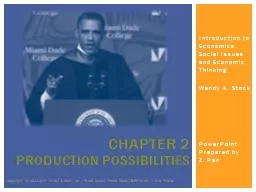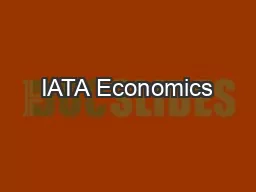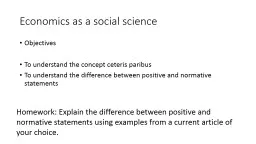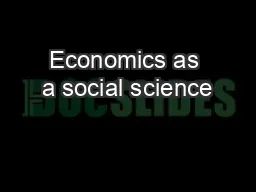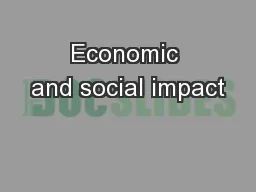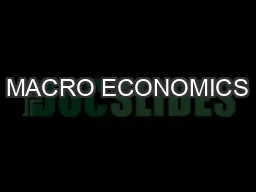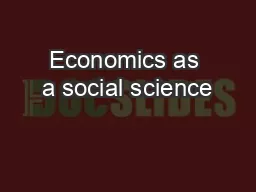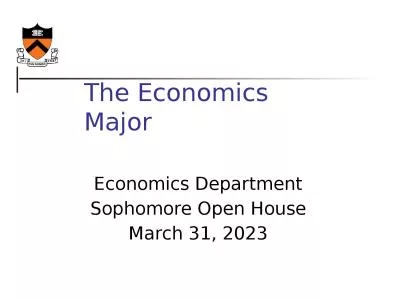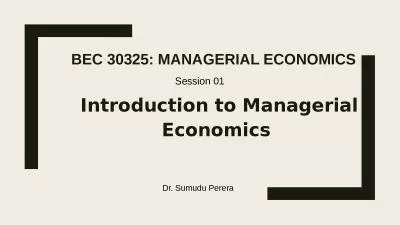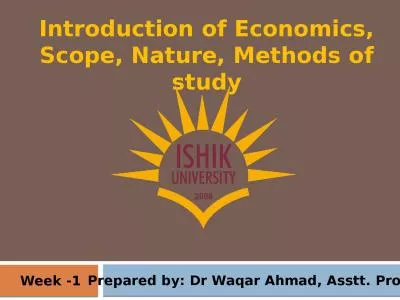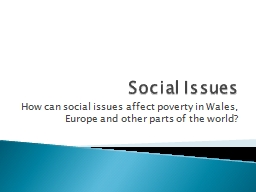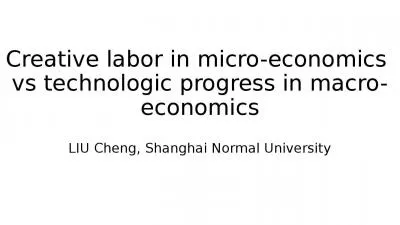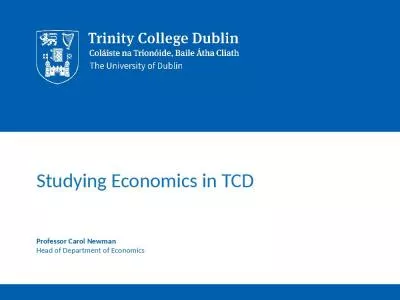PPT-Introduction to Economics: Social Issues and Economic Think
Author : min-jolicoeur | Published Date : 2016-08-01
Wendy A Stock PowerPoint Prepared by Z Pan Chapter 2 production possibilities Copyright 2013 John Wiley amp Sons Inc Photo Credit Pedro PortalAPWide World Photos
Presentation Embed Code
Download Presentation
Download Presentation The PPT/PDF document "Introduction to Economics: Social Issues..." is the property of its rightful owner. Permission is granted to download and print the materials on this website for personal, non-commercial use only, and to display it on your personal computer provided you do not modify the materials and that you retain all copyright notices contained in the materials. By downloading content from our website, you accept the terms of this agreement.
Introduction to Economics: Social Issues and Economic Think: Transcript
Wendy A Stock PowerPoint Prepared by Z Pan Chapter 2 production possibilities Copyright 2013 John Wiley amp Sons Inc Photo Credit Pedro PortalAPWide World Photos Explain the importance of models in economics. Economic Reality. The Economic Myth . Economic choices involve only money.. Economic Reality. Economics focuses on choices, the choices that we make every day. Both as individuals and as a society.. Economics. : www.iata.org/economics 1 CARGO CHARTBOOKOVERVIEW IATA Economics: www.iata.org/economics 2 Cargo eChartbook – Q 1 2015 Economic Outlook & Traffic GrowthThe global economy is expected to grow fa Objectives. To understand the concept ceteris paribus. To understand the difference between positive and normative statements. Homework: Explain the difference between positive and normative statements using examples from a current article of your choice.. Objectives. To understand the concept ceteris paribus. To understand the difference between positive and normative statements. Homework: Explain the difference between positive and normative statements using examples from a current article of your choice.. Higher Computing Science. Economic Impact. The impact of computers in the workplace:. What new. . jobs . were created . because of computers . in the workplace-. . Why are computers more. efficient than humans at performing certain tasks? . Meaning. Scope. Importance. Limitations. Features. Assumptions. Relation between Micro and Macro Economics. Difference between Micro and Macro Economics. Meaning of Macro Economics. The word Macro has origin in Greek word Macros which means large.. Objectives. To understand the concept ceteris paribus. To understand the difference between positive and normative statements. ‘. Free school meals for children at infant school will reduce the cost burden in the future for the NHS’. . Laibson. & List, 2015). Definition. Introduction to Behavioral Economics. www.EconEdLink.org . 2. System 1 – “operates automatically and quickly, with little or no effort and no sense of voluntary control.”. Sophomore Open House. March 31, 2023. Why Study Economics?. Intellectual reasons. . Economics is a unique combination of. Scientific method. Social concerns. Practical reasons. Good starting point for professional schools. . Introduction to Managerial Economics . Session . 01. Dr. . Sumudu. . Perera. Nature . and scope of Managerial Economics. Goals . and Constraints of business organizations. The . Theory of the firm. The . Week -1. Prepared by: Dr . Waqar. Ahmad, . Asstt. . Prof.. Learning Objectives. What is Economics?. What is managerial Economics?. To analyze the concept of economics- scarcity and efficiency?. Micro Economics and macro economics?. Here’s a question...... If you could change the world, what would you do? Hands up!. How many different things did the class suggest?. All the items mentioned are what we call . social issues.. Do you think if the same question had been asked in an American class room then the list of things would be the same, what about in an African country?. vs technologic progress in macro-economics. LIU Cheng, Shanghai Normal University. I. Introduction. The current . macro-economic theories are out of line with micro-economic theories. . Mainstream economics recognizes the role of creative labor in... Professor Carol Newman. Head of Department of Economics. What prompted the start of this sustained increase in living standards?. Why did it happen in some countries at certain times and not at all in others?.
Download Document
Here is the link to download the presentation.
"Introduction to Economics: Social Issues and Economic Think"The content belongs to its owner. You may download and print it for personal use, without modification, and keep all copyright notices. By downloading, you agree to these terms.
Related Documents

